We discussed slum tourism as a couple quite a few times when we found out about the Hidden Jakarta Tour. Wether it would be ethical or not to go on this tour. Their TripAdvisor reviews seemed positive. Not only would we get to see the another completely different side of Jakarta, we would actually be contributing to a community in a sustainable and responsible way. It’s a touchy subject as most people would consider it a day looking at poor people in a very depressing human zoo. Ultimately it depends on the tour itself, which way you look at it and how it affects you as another human being.
In the end we decided to go on the tour as it wasn’t a look-at-these-poor-people-tour as many tours like these turn into. The people who run this tour are mainly doing it to raise money for these communities (all money goes directly to their different projects) and to show this part of Jakarta to Indonesian people. To make a change. This is where the importance is for us, why they run the tour. They want to make a change, this is something the government doesn’t want you to see, thereof the name Hidden Jakarta tour. But by having this tour, they raise awareness of the issue which is the first step for change. Also, many of the people working for the tour are living in these areas themselves, which we really liked. It’s also a way to give back to these communities.
The Hidden Jakarta Tour not only gives you an insight into the disparity of the city, we had a real opportunity to connect with people who were as interested in us as we were in them. “Why do you come to Jakarta?“, is a very popular question whenever we are in Jakarta. Our answer is mostly “The food and the people”. This tour made this even more true for us.
Fatahillah Square
We started our day by heading off in a BlueBird taxi to Fatahillah Square. It’s a on most tourists’ to do list in Jakarta, and a main sightseeing spot. It’s also a popular place for students to grab an interview with the tourists. They ask you your name, where you’re from and why you came to Indonesia, that’s usually in front of a camera. Then they want a selfie with you, then the next person ask the same thing. You could do this all day.
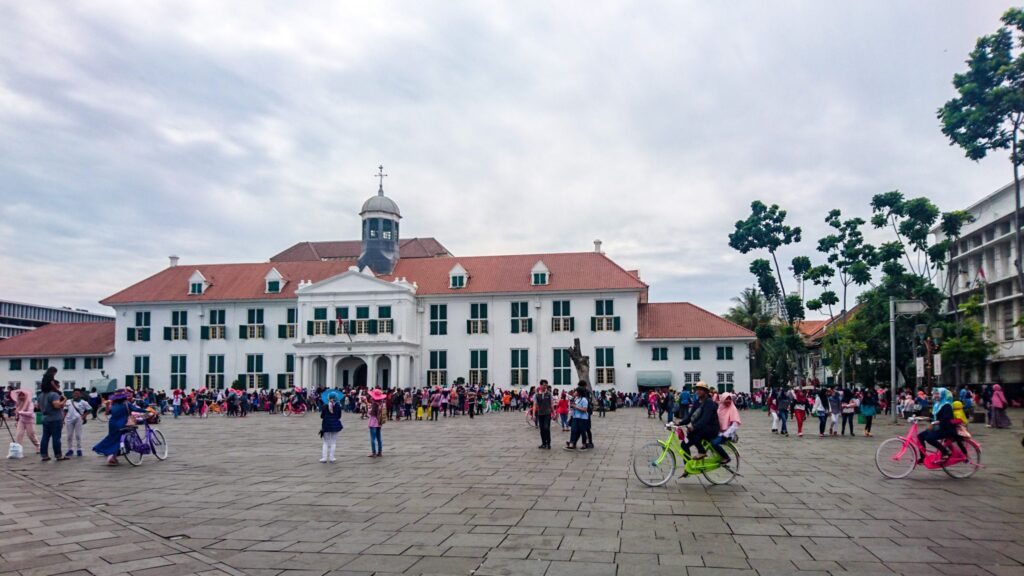
We grabbed a coffee at the famous Cafe Batavia. The food was OK, but as always in Indonesia you can get better for cheaper, essentially you’re paying for the location and the interior of the cafe. It’s well worth the visit for the location. Coffee was excellent, they have different coffee from all around Indonesia and hits a spot in my Top 5 Best Coffee in Jakarta blog post.
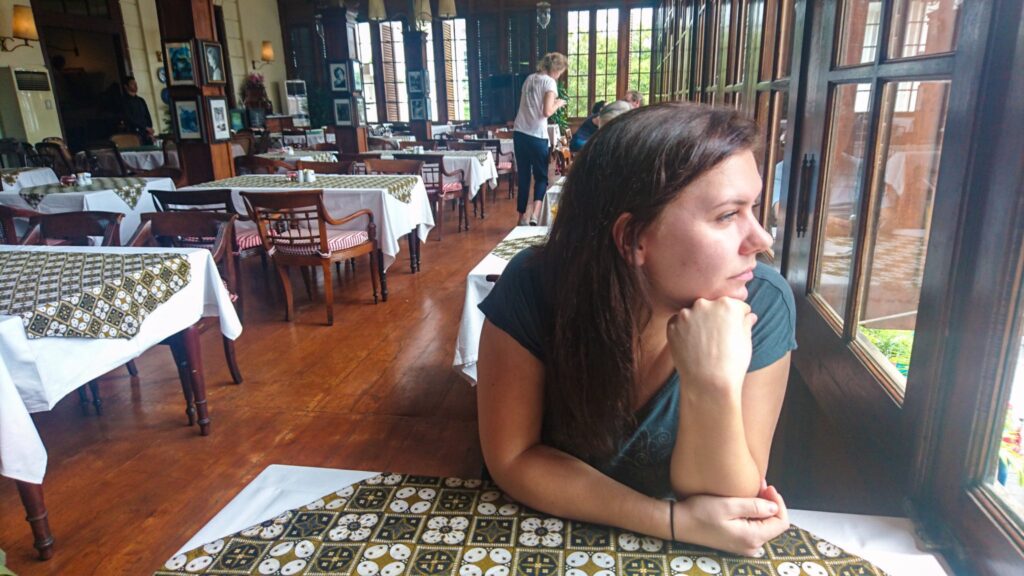
Our guide meets us at a local cafe, Kantin Mega Rasa, just around the corner. We grabbed lunch and an ice tea, while discussing what’s in store for the day. It’s also a great time to ask anything you’d like to know and about taking photos, as that was something we viewed as a potential awkward/embarrassing, or not at all normal social behaviour. The best thing was to take it by ear, our guide would check, or as it turned out people would ask us to take their photo. Well it is Indonesia, and they do love their selfies.
The three of us jumped in a microlet (small buss for local transportation) and headed off. We jumped out at Jembatan Kota Intan, an original Bascule bridge, and after dodging the traffic we ducked into a side alley and headed off into the dark and towards the train lines.
Dark Places
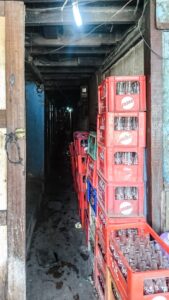
Ducking into a side alley is not something you’d normally choose to do on your own, or in our case, wouldn’t even know it led somewhere. Our guide smiled and greeted a few people as we walked through the long corridor peeking into peoples homes on each side. You see people cooking food on stoves next to a central gutter, another person washing their clothes or feeding a baby, going about their normal lives in the damp, fetid air. We stopped at a door and our guide bids us welcome into a persons home. It’s about 4m x 4m square, no windows, the railway is only a meter above you.
This was our first meeting. She explained to our guide how she lives in this space, her husband earns about $2 a day as a parking attendant nearby. This place is ‘rented’ from a Chinese criminal gang who collect about $30 a month from them. As you can see in the pic they have electricity and a fridge, their possessions are hung around or neatly packed against the wall. The fan blasts 40°c hot air around the room, it’s hot as hell, but we all smile for an awkward turtle moment. Yes the first meeting was a bit awkward for us, as we wasn’t sure how to act. But it got better throughout the tour and we relaxed a bit more.

Back in the dark corridor, we climb one of the ladders and walked along the thin plywood floor/ceiling and past a few doors to sunlight and a gasp of ‘fresh’ air. Before we head back down and onwards to the bridge, greeting mostly women who were chatting or cleaning/cooking and children who are running around playing and being shy when we say hello.

Boat Trip
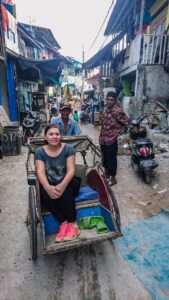
This time we jumped into an bicycle tuk-tuk (illegal in Jakarta, but no one cared in this area) and disappear off towards the docks. This is a very working class, low income area. Our guide had us pulled across the water way by a family working this “ferry”/boat/raft. It was covered from the sun by some tarp with a piece of rope to pull it left or right. One of the family members guided us into a thin wooden boat. His son took us out to the old lighthouse and back with his grandson sitting up front all proud of his new passengers whilst he played on a broken mobile phone. We passed dozens of ships in different states of repair and after about 30 minutes we were out in open water, the old green lighthouse in view and massive container ships dotting the horizon. We headed back feeling slightly smaller in our 4 meter long wooden boat.

When we arrived back our guide led us out into the wasteland next to the docks. The ground was rubble, bricks, concrete, bits of cable. Dotted across the debris were makeshift tents, built from whatever could be found, tarpaulin, wood, sheet metal, whatever worked. Floors were on stilts, beds were either on the floor or raised where the whole family would sleep together. By family, I mean in this case a woman with six children, her husband works on a cargo boat sailing between Indonesia and the UAE. She see him once every three or so months when he brings her a few hundred dollars after his expenses.
These houses are illegal, in the sense that they’re not allowed to build anything on these grounds. Ever so often the government sends bulldozers to take it all down. And these families have to rescue what they can and start over, once the bulldozers left.
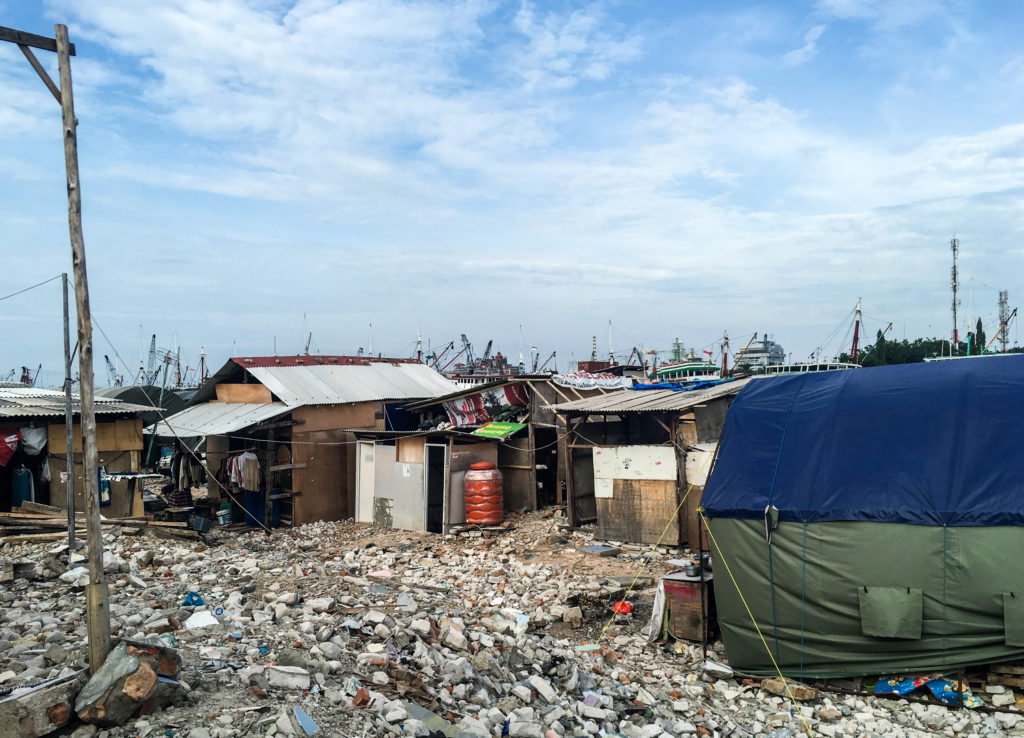
We sat down with a family and had a really nice chat with them. We were asked a ton of questions, If we were married, where we live, where we come from, How much we earn? How much we pay for rent?. You quickly realize these are huge almost inconceivable sums of money for these people.
Reflections
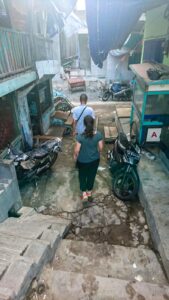
The Indonesian government doesn’t want to admit to this problem. Many Indonesians have never seen these areas. That’s also a reason why we found it important to go. To go here and show that these people matters. That’s an issue in this area, the guide told us that many of the people living here doesn’t think they matter as not even their own countrymen comes here. He continued to explain how happy it made the people here to have foreigners come, just for a small chat. We got so many smiles from people we were passing saying hello, Livia in Indonesian, which made them smile even more.
It hit me hard, it was difficult to hold back the tears once we left the dockland. Us with so much, so “wealthy”, even though we have to work to live and are about one or two paychecks away from being on the street ourselves. But you can’t imagine having to survive like that and still be able to smile. It’s a rough hand to be dealt in life, it makes you tough. You look at the first photo in this post, now look at the last. Its was a sobering experience for everyone.
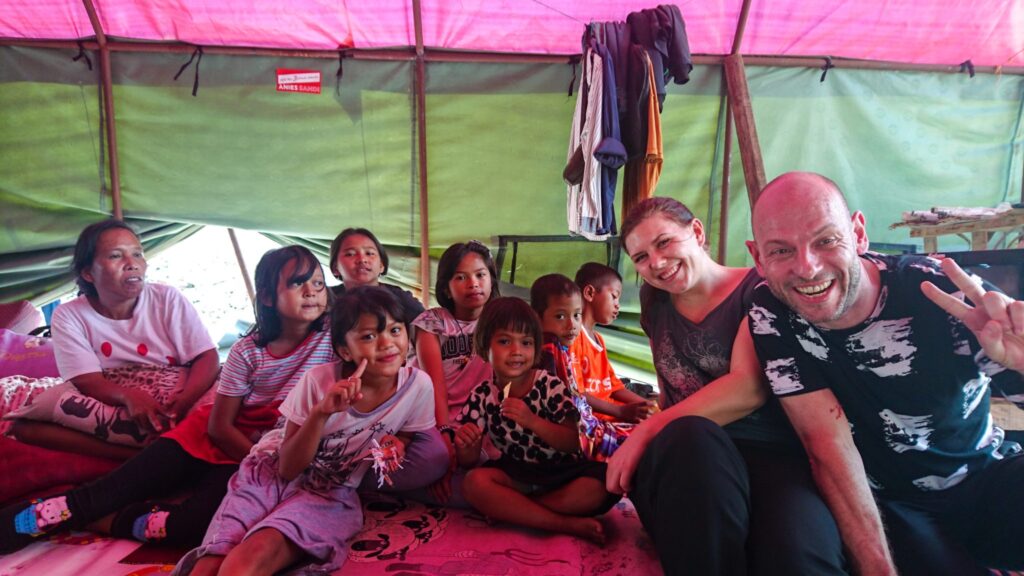
More Indonesia!
Make sure to see our Indonesia page with tips about travel in Indonesia, map and all our blog posts about Indonesia.
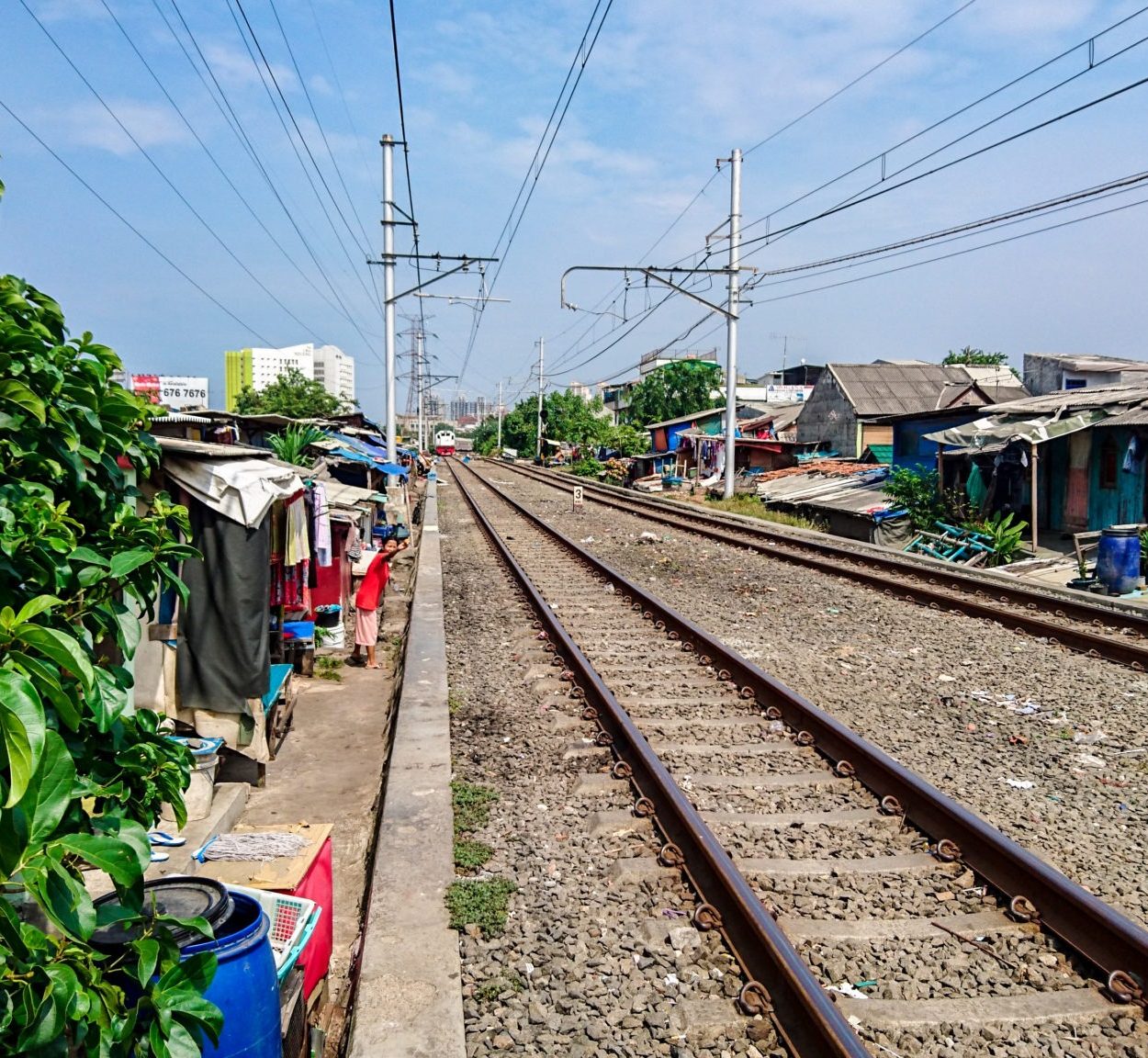

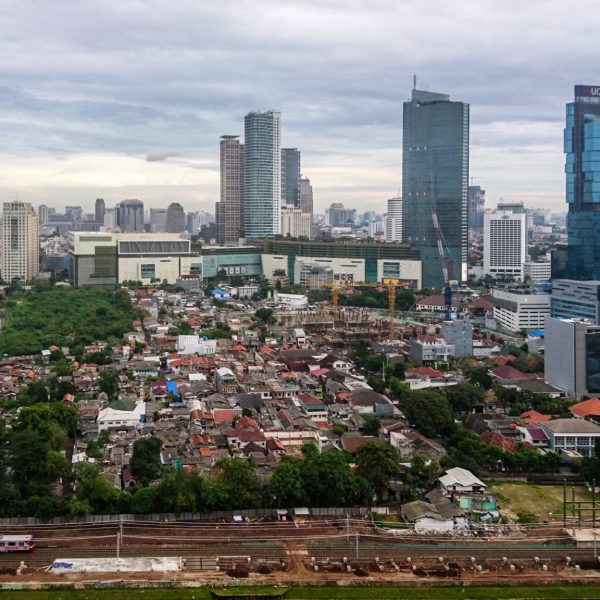
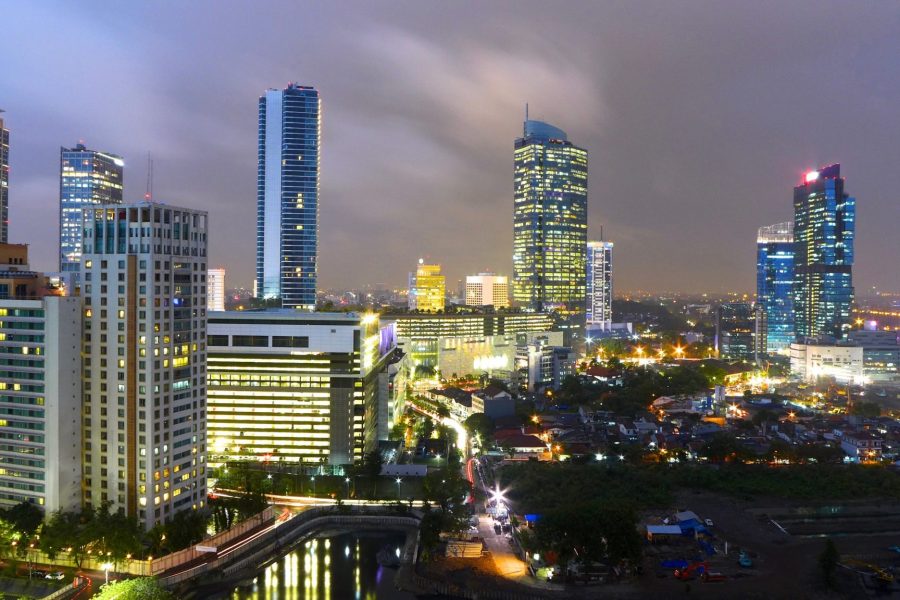
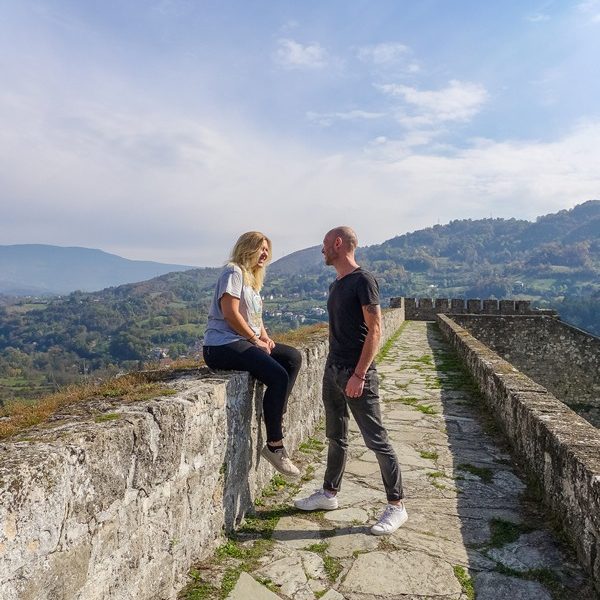
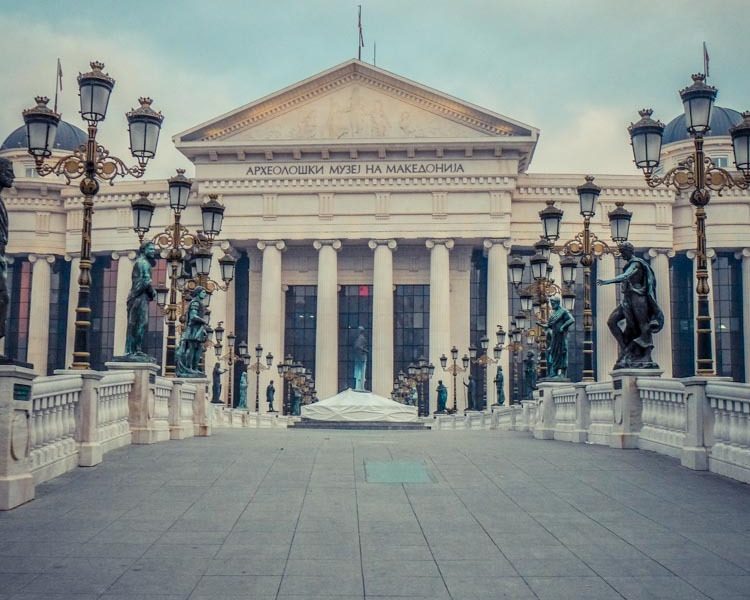
Leave a Comment